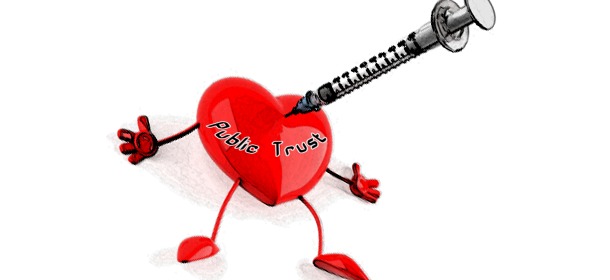Conventional Med
Precautionary Principle Is Obvious, But Ignored, As Science Provides False Cover
When dealing with products and policies that can have devastating effects on the health of us humans, along with the world we inhabit and depend upon for survival, caution should obviously be a primary principle. There’s a term for it: the Precautionary Principle. Though its meaning is intuitively obvious, there are several similar and official definitions. Three are offered at the end of this article.
Quite simply, the Precautionary Principle states that, when risk to health or environmental damage can be perceived to exist, then action must be on the side of risk prevention, even if there is no science to support that perception of risk. In other words, better safe than sorry. The Precautionary Principle is so obvious that you’d think it would be policy, but that’s far from the reality.
The standard response when warnings of potential harm from products or governmental policies, such as vaccination implementation, goes something like, “There is no scientific proof that Pharmescutinol causes cancer or birth defects.” Thus, the Precautionary Principle is ignored.
Unless a product’s harm can absolutely be proven to exist, it is assumed not to exist. But, to get that proof is next to impossible, because the cost of science is enormous—and virtually no one has that kind of clout beyond multinational corporations, or their wholly-owned subsidiaries, governments.
As a result, the profiteers produce pseudo science that appears to prove whatever increases their profits, and that virtually never supports the Precautionary Principle. Science is cast in the role of the enemy of the Precautionary Principle. If science were honest, that wouldn’t be the case. But science rarely is anymore. Whenever profits are the reason for financing research, the results serve the profiteer.
Won’t waiting for proof of harm hurt corporate profits? Most assuredly, corporate profits are likely to suffer if we wait for proof of harm. But, we tend to wait an interminable amount of time for proof of harm, while that harm piles up. Ecosystems are destroyed. Health suffers. And by the time that proof is found—proof that not even the Big Pharma, Agribusiness, Mining, Oil, Coal, or other destructive industries can readily deny with their bought-and-paid-for pseudo science—the damage is done, and will likely go on for decades, or even be unresolvable.
Instead of asking about the cost to corporate profits, we should be asking about the costs of harm done. Ecosystems are irretrievably destroyed. Dead zones are created in the oceans, a direct result of Agribusiness factory farms and other earth-unfriendly corporate practices. Rivers are dead. Ocean fish populations have collapsed. Chronic disease afflicts at least one-third of the US population. Genetically modified crops have escaped into the wild, and that can never be undone. Farmers in India are starving because GMOs are not living up to their promise.
Lab experiments have shown connections between the practices and products of corporations and both environmental degradation and health problems. When will the sanity of the Precautionary Principle be applied? Will we have to wait until there aren’t enough people left to buy the products corporations make?
In the meantime, whenever someone trots out that old canard, “But no one has ever proven that …”, tell them they’ve got it backwards. It’s up to them to first prove that what they’re advocating is safe. It isn’t up to you to prove that it’s not. Cite the Precautionary Principle, using whatever terminology you choose. Turn the tables on the corporate trolls. Let them know that they are the ones lacking proof, not you.
Definitions of the Precautionary Principle:
- [T]he precautionary principle ensures that a substance or activity posing a threat to the environment is prevented f rom adversely affecting the environment , even if there is no conclusive scientific proof linking that particular substance or activity to environmental damage. (Boston College International and Comparative Law Review(1))
- When information about potential risks is incomplete, basing decisions about the best ways to manage or reduce risks on a preference for avoiding unnecessary health risks instead of on unnecessary economic expenditures. (Environmental Protection Agency(2))
- [T]he precautionary approach shall be widely applied by States according to their capabilities. Where there are threats of serious or irreversible damage, lack of full scientific certainty shall not be used as a reason for postponing cost-effective measures to prevent environmental degradation. (United Nations’ Rio Declaration on Environment and Development(3))
Sources:
- (1)The Precautionary Principle: A Fundamental Principle of Law and Policy for the Protection of the Global Environment
- (2)Terms & Acronyms
- (3)United Nations’ Rio Declaration on Environment and Development
Tagged agribusiness, big pharma, ecology precautionary principle, environment precautionary principle, gmo, medicine precautionary principle, pharmaceuticals precautionary principle, precautionary principle, pseudo-science, pseudoscience, science, science precautionary principle


















Pingback: New Nanoparticle Vaccine Adjuvant May Add to Autoimmune Disorders & Allergies | Gaia Health
Pingback: Nanoparticles Added to Food, Drugs, and Vaccines Proven to Damage Health | Gaia Health
Pingback: France’s Ban of GM Corn Is Reversed by the EU | Gaia Health